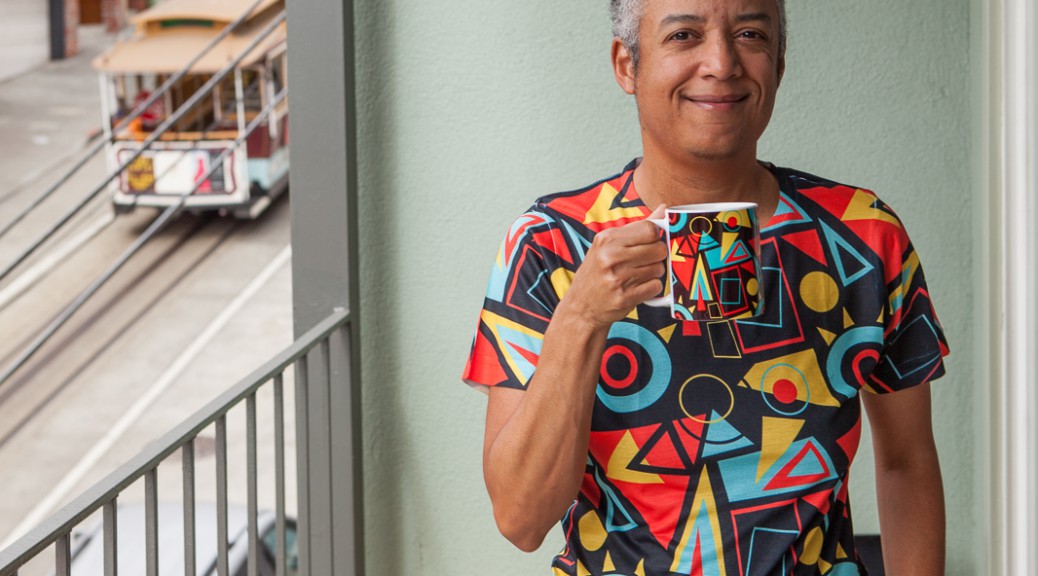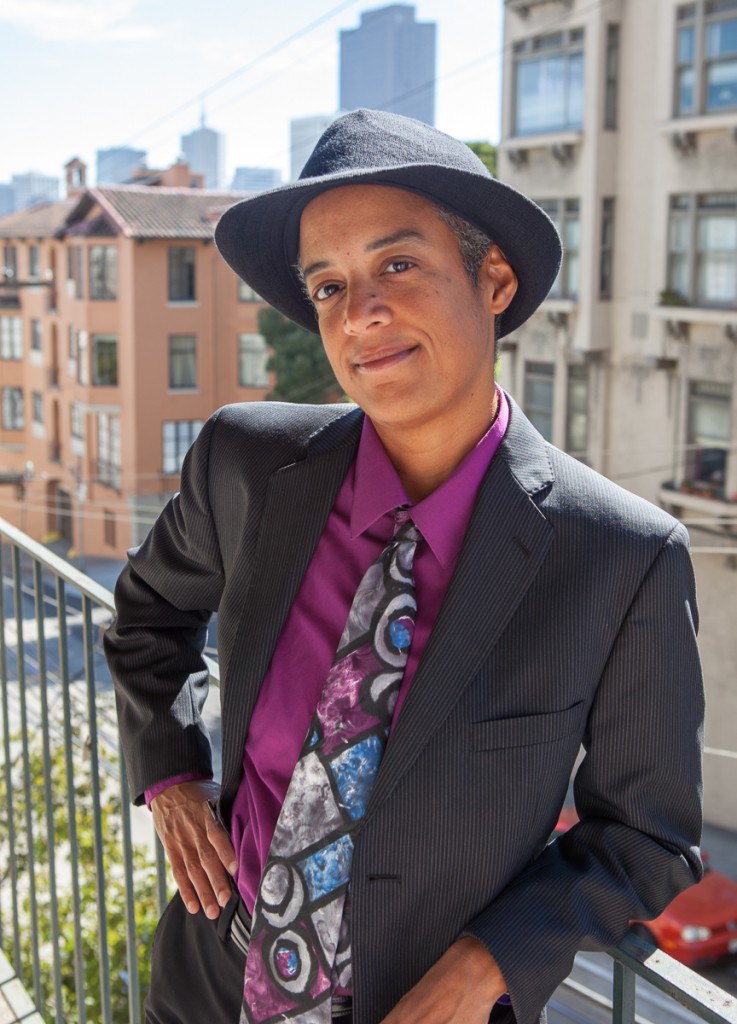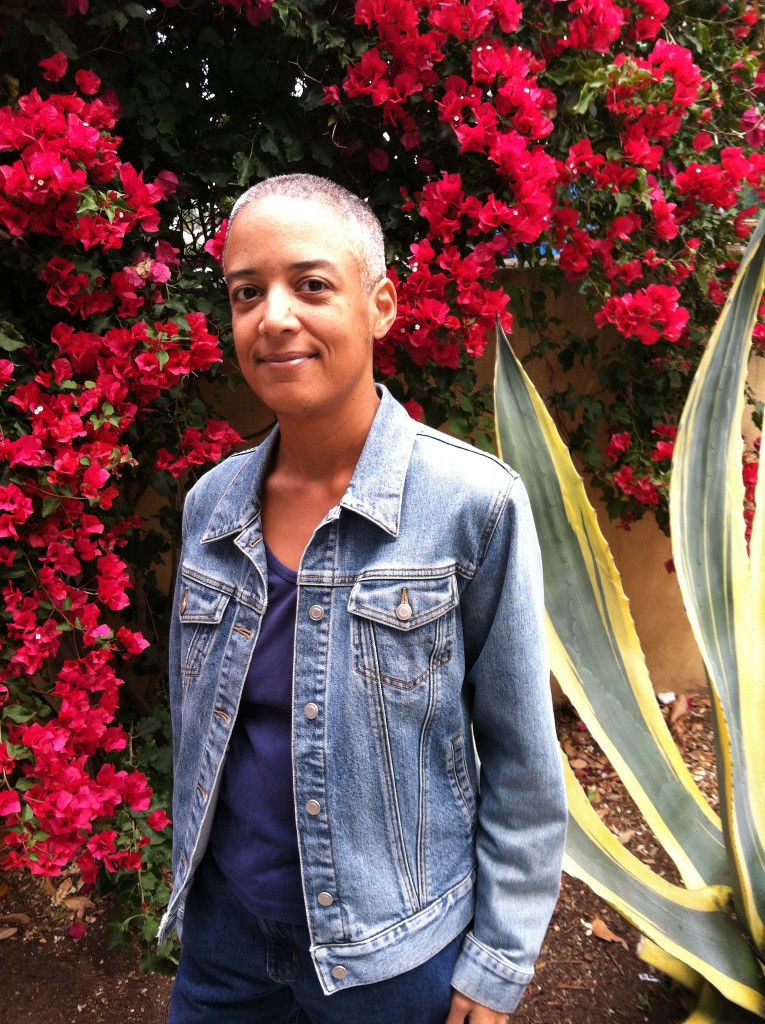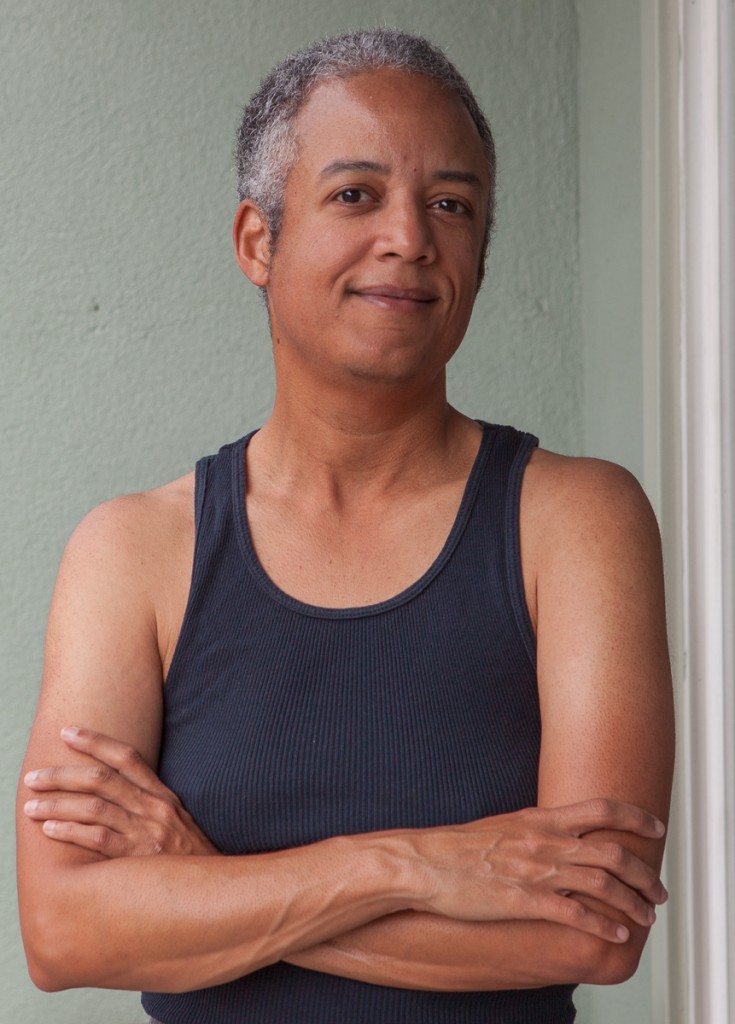[Image: Side-by-side self-portraits of Pax, the author, wearing a black tank top, holding a camera and looking in the mirror.]
This summer marks several milestones in my transition. Last week, July 3, I passed a year and a half on testosterone; a photo comparing my current appearance with that on the day of my first injection is above. Tomorrow, July 10, is the one year anniversary of getting my court order for legal change of name and sex. And next month, August 23, marks my second anniversary of publicly going by the name Pax Ahimsa Gethen and identifying as gender-neutral (later amended to agender).
In the course of my transition, I’ve been reading a lot about gender terminology, and tweaking my self-description to better match my identity. One of the most influential authors for me was Matt Kailey, a gay trans man who sadly died last year at the age of 59. Matt, like me, did not realize that he was trans until middle age. He was exclusively attracted to men, and (unlike me) had a very feminine presentation pre-transition. Matt had a great advice column, Tranifesto, and in it he helped me decide how and when to reveal my new name.
In Matt’s book Just Add Hormones: An Insider’s Guide to the Transsexual Experience, he explains that transsexual people “change their physical bodies to match their gender identity.” In the FAQ on his web site, he explains that not all transsexuals identify as transgender; transgender refers to anyone who deviates from binary gender norms, whereas some transsexuals simply identify as binary men and women post-transition, and don’t want to be known as trans.
I’ve since read a number of comments suggesting that we should get rid of the term “transsexual” altogether, as it is stigmatizing, outdated, and presents a medical-centered view of gender. In contrast, I’ve read people who are sometimes known as “truscum” or “transmedicalists” saying that only people who wish to physically transition from one binary sex to another are trans; they want nothing to do with the expanding “umbrella” of transgender, which may include people who do not experience physical dysphoria at all.
My opinion, which is still evolving as I’m always learning, is that anyone who does not identify with the gender corresponding with the sex they were assigned at birth can identify as transgender.* This can include nonbinary-identified people, although some such people identify as neither trans nor cis. This can also include people who do not experience dysphoria, physical or otherwise. (This article by Sam Dylan Finch helps dispel misconceptions about dysphoria and identity.)
Ultimately, it’s not up to me to decide who is or isn’t transgender. I can understand the pain and frustration of trans people with binary identities and significant dysphoria who just want to be recognized as the “opposite” sex, and don’t want to be lumped in with people who have a much different experience of gender. That’s where I feel it makes sense to have a separate “transsexual” label, but again, it’s not up to me to decide who can claim that term.
While I mostly agree with Matt Kailey that most transsexuals “change their physical bodies to match their gender identity,” many are not able to access hormones and/or surgery, for financial, health, or other reasons. Also, I have a different conception of gender identity than most people I’ve read on the subject. When I say I’m a transsexual male, that’s what most would call my gender identity, but I actually see that as my sex identity.
The distinction between gender identity and sex identity is made in the article Gender in 12 Dimensions. I don’t agree with some of the assertions in this article; I no longer see masculinity and femininity as opposite ends of a spectrum, and changing gender appearance is certainly not as easy as putting on a dress or a tie (especially here in San Francisco). But this article provided a more useful way for me to think about sex and gender than what was generally presented in the mainstream media. In particular, being transsexual is defined as “having a sex identity that does not match your sex appearance,” which suits me; I am male, but I currently have physical characteristics that make me appear to be female.
So if I am a transsexual male, how can I also be agender? I’ve seen few other people who have a distinct sex and gender identity in the way I describe. Marilyn Roxie is one; their sex is male and their gender is genderqueer. (Their site is one of the most useful I’ve found on nonbinary identities.) Identity is separate from gender expression, however. As I talked about in my article on agender fashion, having a nonbinary gender does not presume having a neutral or androgynous presentation.
I have sometimes wondered if I should just drop one or the other of my identifying terms, to make things less confusing. If I’m male, why can’t I just be a gender-nonconforming man? Or if I’m agender, why can’t I just be that and not also insist on a binary sex identity?
The answer is that defining myself as an agender transsexual male just feels right to me. I realize that many people will always think that I’m a special snowflake, and many others will ask why we need labels at all. To the first group, I say that each one of us is unique, and no one can define anyone else’s identity. To the second group, I say that is coming from a place of privilege, similar to the (mostly-white) people who say “I don’t see color.” Labels for gender identity (and sexual orientation, as I wrote about yesterday) are useful to help us understand ourselves better, and to find other people who are like us for mutual support.
I expect that my understanding of gender, sex, and my own identity will continue to evolve, as I’m always learning. What’s most important is recognizing that each of us should have the right to define our own genders, and express ourselves in the way that we see fit.
* But see also this article on intersex identity by intersex trans professor Cary Gabriel Costello, who makes the distinction between “cisgender” and “ipso gender” for intersex people.




